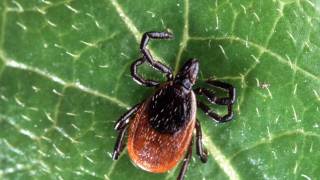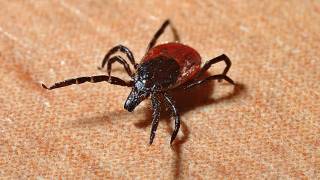Lone Star Ticks Prefer Women’s Breath

According to a new study published in Experimental and Applied Acarology on January 10, 2019, the lone star tick has a preference for human female breath.
This is the 1st research to demonstrate human gender preferences for lone star ticks.
These findings suggest either that chemical compounds in female breath attract the lone star ticks, or that male breath repels them, the authors concluded.
This new study included 20 men and 20 women, who breathed into tubes containing 10 Amblyomma americanum ticks.
These researchers found an average of 42.5 percent of lone star ticks chose a female host, while just 18 percent of these ticks chose a male host.
And, 39.5 percent of the lone star ticks did not make a choice, the authors said.
‘This new understanding can lead to a better assessment of what aspects make one person more susceptible to a tick bite, and which individuals may be at higher risk for exposure to a tick-borne disease," the authors concluded in the study.
In 2017, state and local health departments reported a record number of tick-borne disease cases, 59,349, which was an increase from 48,610 cases in 2016.
The lone star tick, Amblyomma americanum, is found throughout the eastern, southeastern and south-central states, says the Centers for Disease Control and Prevention (CDC).
The distribution, range, and abundance of the lone star tick have increased over the past 20-30 years.
All 3 life stages (larva, nymph, adult) of the lone star tick will feed on humans, and will also feed readily on other animals, including dogs and cats, and may be brought into the home on pets.
The saliva from lone star ticks can be irritating and can cause redness and discomfort at a bite site.
People should monitor their health closely after any tick bite and should consult their physician if they experience a rash, fever, headache, joint or muscle pains, or swollen lymph nodes within 30 days of a tick bite.
These can be signs of a number of tickborne diseases, says the CDC.
Lone star tick bites can indeed cause a range of human illnesses, including ehrlichiosis, Southern Tick-Associated Rash Illness (STARI), and Bourbon virus.
There’s no known treatment for Bourbon virus, and tests for Bourbon virus are not widely available.
The discovery of Bourbon virus from a lone star tick suggests that the public health burden of these pathogens has been underestimated, according to the CDC.
Many people can be confused about whether the lone star tick causes Lyme disease, which is the most commonly reported tick-borne illness in the USA.
However, it does not, according to a previous study.
A recent review of 60 different studies tested for transmission of B. burgdorferi by lone star ticks, and the tick transmission of Lyme disease, was never observed.
Our Trust Standards: Medical Advisory Committee
- Fatal attraction: lone star ticks (Amblyomma americanum) exhibit preference for human female breath over male breath
- Responses of Amblyomma americanum and Dermacentor variabilis to odorants that attract haematophagous insects
- STARI or Lyme?
- Tick-Borne Disease
- Ticks Transmit 20 Different Infections in the USA
- Lyme Disease Not Carried by Lone Star Ticks
- Lone Star Ticks Carrying Bourbon Virus
- Lone star ticks prefer females' breath over males', study says




